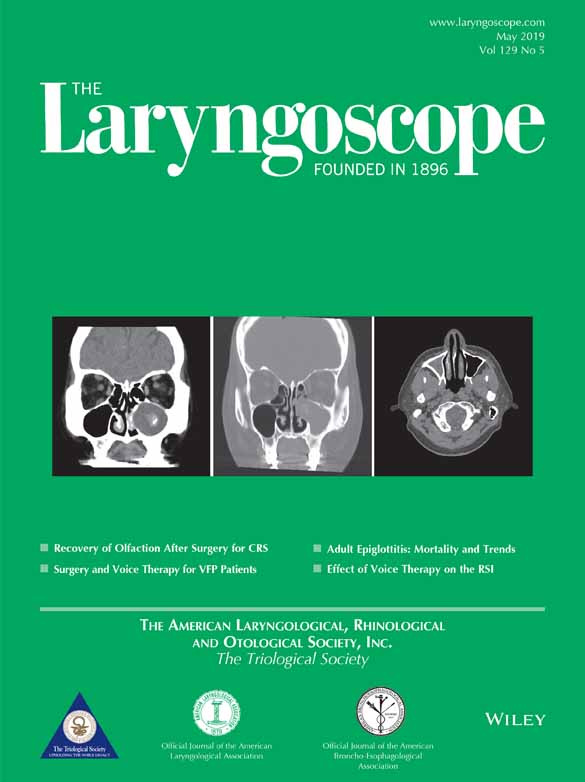Comparison of Modern Rigid Fixation Plating Outcomes for Segmental Mandibular Microvascular Reconstruction
Presented at the Triological Society Combined Sections Meeting, Scottsdale, Arizona, U.S.A., January 18–20, 2018.
The authors have no funding, financial relationships, or conflicts of interest to disclose.
Abstract
Objectives/Hypothesis
New advances in osseous microvascular mandibular rigid fixation are being employed at many institutions. These include standardized prebent/preformed reconstruction plates as well as computer-aided design/computer-aided manufacturing (CAD/CAM) custom plates that are patient specific. Our goal was to assess and compare the outcomes of both of these new technologies when utilized for mandibular microvascular reconstruction.
Study Design
Retrospective chart review.
Methods
Subjects were categorized into two groups according to their mandibular rigid fixation technique: group 1 = prebent/preformed plates and group 2 = CAD/CAM custom plates. Primary outcome measures were 1) perioperative complications (defined as deep tissue infection, wound dehiscence resulting in bone exposure, and/or plate exposure) and 2) reoperation rates for mandibular hardware failure/explantation. Statistical analysis consisted of χ2, Fisher exact test, and multivariable regression models.
Results
A total of 142 subjects underwent microvascular mandibular reconstruction in a 6-year period. Eighty-nine subjects utilized prebent/preformed plates, and 53 employed CAD/CAM custom plates. Perioperative complications occurred in 32 of 89 (35.9%) subjects with prebent/preformed plates and 11 of 53 (20.7%) subjects using CAD/CAM custom plates. Reoperation requiring hardware explantation occurred in 18 of 89 (20.2%) subjects and three of 53 (5.6%) using CAD/CAM custom plates. Statistical comparison of perioperative complications between the two groups approached significance (P = .0556), and the rate of reoperation was significant favoring CAD/CAM implants (P = .0180).
Conclusions
In our experience, CAD/CAM custom plates utilized for rigid fixation during microvascular mandibular reconstruction demonstrated fewer complications and statistically lower reoperation rates when compared with prebent/preformed plates.
Level of Evidence
2c Laryngoscope, 129:1081–1086, 2019




